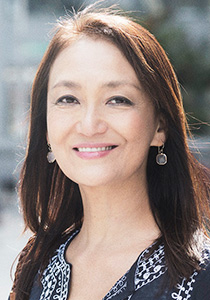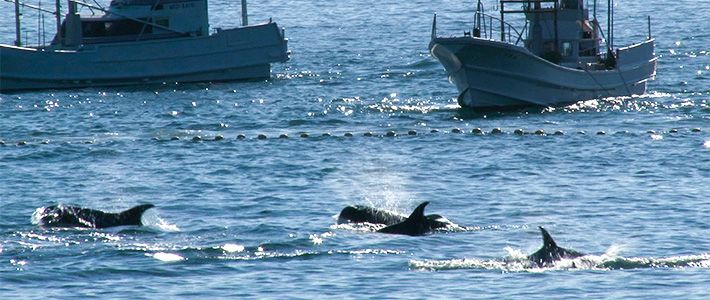
Taiji in Wakayama Prefecture: The World in Miniature
Society- English
- 日本語
- 简体字
- 繁體字
- Français
- Español
- العربية
- Русский
The 2009 US film The Cove brought the small town of Taiji in Wakayama Prefecture to the attention of the world, playing to almost universal praise across the United States and winning the 2010 Academy Award for Best Documentary. Exposing what the film’s producers called the “brutality” and “cruelty” of the dolphin-killings that take place every year in the Hatakejiri inlet (the “Cove” of the title), the film brought this quiet coastal town of around 3,000 people into the global antiwhaling movement’s spotlight, triggering a barrage of criticism of the local population. At the center of the controversy were the town’s annual dolphin drive hunts, in which dolphins, pilot whales, and other small cetaceans are driven into the inlet by the sound of fishermen banging on metal poles and captured or killed.
Documentary director Sasaki Megumi worked in the town from April 2010 until July 2016, filming people from varied backgrounds with totally different positions on the controversy. These figures included the mayor of Taiji, local fishermen, Sea Shepherd activists, Ric O’Barry (the former dolphin trainer who was the “star” of The Cove), a representative of Nippon Yonaoshi-kai, a political group that has served as an intermediary between foreign activists and the town’s representatives, and a former journalist studying the relationship between Taiji and the media, who is concerned about the lack of media savvy in Japan. The film delivers the voices and opinions of a diverse range of different viewpoints, and avoids presenting the story from a single perspective.
The Cove and the Problem of One-Sided Reporting
INTERVIEWER Your first work, Herb & Dorothy, explored a couple and their dedication to fine art. It’s quite a leap from there to the whaling controversy. What made you want to tackle the subject of whaling and the dolphin hunts?
SASAKI MEGUMI I went to see The Cove in New York when it came out in 2009, and it had a big impact on me. As a filmmaker, I could see that the narrative of the film had been crafted very skillfully. That’s one of the reasons it had such a powerful impact, I think. I sensed right away that this was going to pour oil on the flames of the whaling controversy. And I was astonished that there was no substantive response from the Japanese side, even though the film was quite one-sided and was saddled with some preconceptions and factual misunderstandings.
I’ve lived in America for many years now. And I’ve always been struck by the virtual unanimity of opinion that exists on the whaling issue. Even though there are wide differences of opinion on other controversial subjects like gun control or abortion, opposition to whaling is so unanimous it’s virtually the only opinion that exists. And so, with some trepidation, I decided to make the film. I felt as if The Cove was giving me a bit of a prod in the back.
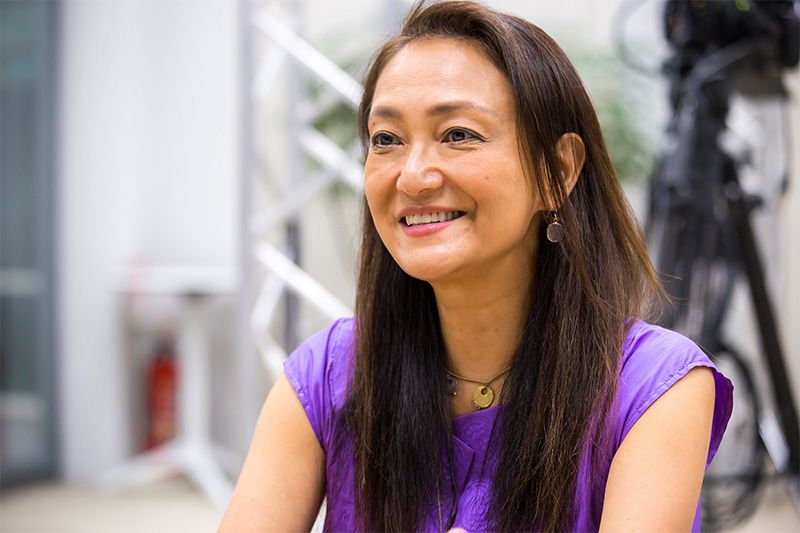 Filmmaker Sasaki Megumi says she was struck by the fact that only one side on the whaling controversy ever seemed to be heard.
Filmmaker Sasaki Megumi says she was struck by the fact that only one side on the whaling controversy ever seemed to be heard.
INTERVIEWER Some people in Japan argued that The Cove was biased and tantamount to propaganda, and that the filmmakers had used hidden cameras and other morally questionable techniques. Was part of your motive in making this film to restore some balance to the argument?
SASAKI In a sense, you could say that doing away with propaganda and offering a more balanced view is a kind of propaganda itself. People in Japan tend to have this idea that documentary films are a kind of extended version of the factual programming you might see on NHK, for example. But in fact, a documentary is shot from the individual perspective of the director, and is deeply imbued with the director’s values. It’s not supposed to be a neutral point of view.
But with The Cove, I felt as a filmmaker myself that there were problems with the basic attitude of the film. Take Michael Moore, for example: In his films, the camera is pointed at the American government, at big business, at powerful industry figures. His films expose the injustices of people in power, and speak up for the voiceless people who suffer as a result. But in The Cove, by contrast, the filmmakers had a budget of many millions of dollars, employed the top Hollywood film crews and the latest technology, and brought a mountain of equipment into Taiji, a small fishing town in rural Japan. And the people they captured on film were these fishermen who have made their living from whaling and the dolphin hunts for generations. Without any concrete proof or verification, the filmmakers depicted the fishermen as evil, and themselves as the heroes. It was so one-sided, and the film was based on a foregone conclusion. Only one side was right.
In today’s society, where digital media and the Internet spread information instantly around the world, people with a weak grasp on information technology find it difficult to make their voices heard. I felt a kind of violence in the actions of those in a position of power, who were able to use their overwhelming IT advantage to spread their side of the story. I think filmmakers have a certain moral responsibility toward their subjects, and I had strong reservations about the position of the filmmakers in this case, who seemed to assume from the outset that their own side had a monopoly on the truth.
INTERVIEWER One interesting side of the film is its human drama aspect. We are introduced to a wide range of diverse figures. One vivid presence in the film is Nakahira Atsushi, the representative of the Nippon Yonaoshi-kai group.
SASAKI We started filming in 2010, not long after The Cove was released in Japan, when the Sea Shepherd Conservation Society had a permanent presence in Taiji. We naturally encountered all kinds of different people and situations, which I was able to capture on camera. That’s one of the great things about documentary filmmaking, I think.
Nakahira-san turned out to be an unexpected peacemaker. There was a tense impasse in the town at the time, with a total breakdown in communication between the Taiji side and the anti-whaling activists. Nakahira worked desperately to get his message across to the Sea Shepherd people in his elementary English. I think he was the only person to truly understand the importance of dialogue. The big mainstream media don’t like to put someone like him on camera, because they’re never sure what he’s going to say. I had my reservations too at first, but he is someone who’s been intimately involved in the Taiji controversy, and is trying to get across his own point of view. And isn’t that the key to diversity in a society—that no one’s views are excluded? All people are trying their best from their own positions and perspectives. And that’s another of the things I wanted to show in the film.
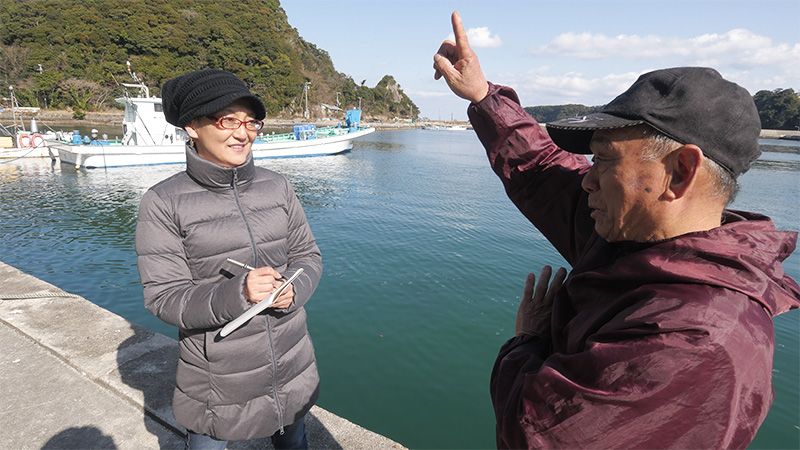 Sasaki conducts an interview in Taiji. (© Okujira-sama Project Team)
Sasaki conducts an interview in Taiji. (© Okujira-sama Project Team)
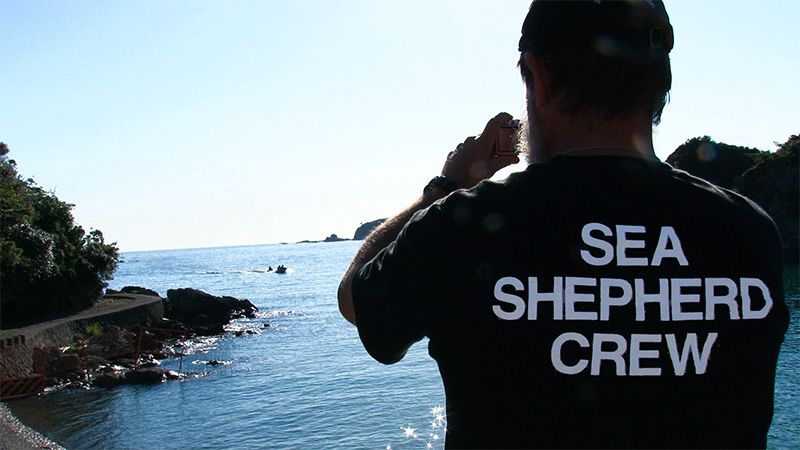 Scott West, a member of the Sea Shepherd team that was posted permanently in Taiji during 2010 and formed the nucleus of the movement against the dolphin hunts. (© Okujira-sama Project Team)
Scott West, a member of the Sea Shepherd team that was posted permanently in Taiji during 2010 and formed the nucleus of the movement against the dolphin hunts. (© Okujira-sama Project Team)
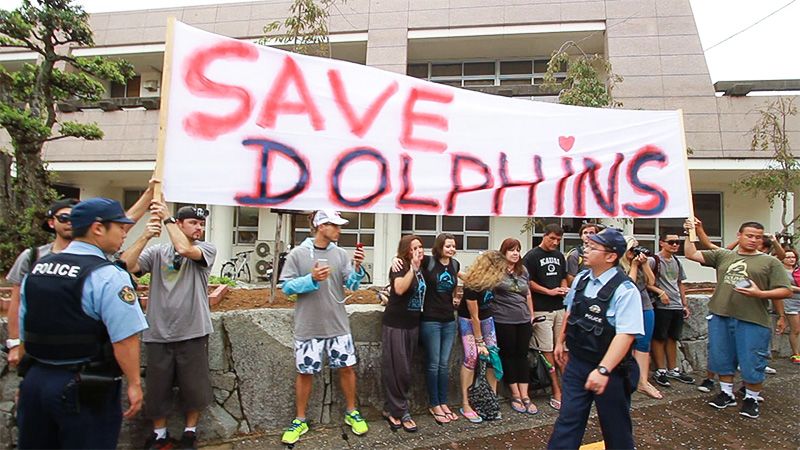 Activists protest against the dolphin drives. (© Okujira-sama Project Team)
Activists protest against the dolphin drives. (© Okujira-sama Project Team)
Japan’s Communication Deficit and Stagnant Thinking
INTERVIEWER Sea Shepherd never seemed to make much of an effort to communicate in Japanese. Do you think that was a problem?
SASAKI I think a bigger problem lies with the Japanese side, and their ability—or lack of it—to communicate in English. This is a serious problem for Japan. Really, all students should be able to express their points of view in English by the time they leave high school. A lot of Japanese people tend to be afraid of communicating in other languages. Communication requires determination: a passionate urge to get across what you want to say, and a willingness to make an effort to understand what the other side is saying. With this film, the controversy over whaling and the dolphin hunts was the main topic of the film and a useful entry point. But what really interests me is less the rights and wrongs of this one controversy than something more universal that the issue reveals.
INTERVIEWER Jay Alabaster is a former journalist who lived in Taiji for two years to try to understand the local culture, winning the respect and trust of the local people. He says in the film that Taiji is like all of Japan in miniature and suggests that for all its strengths as an economic superpower and for all its advanced technology, Japan as a country is still very poor at communicating and getting its message out.
SASAKI It was a huge help when Jay agreed to appear in the film. As well as somehow encapsulating the whole of Japan, I think you could say that Taiji is also a bit like a small-scale model of the world. Fragmentation and polarization seem to be emblematic of the world we live in today, whether it’s what’s happening in this small town of 3,000 people, or the collisions and clashes happening between different groups around the world.
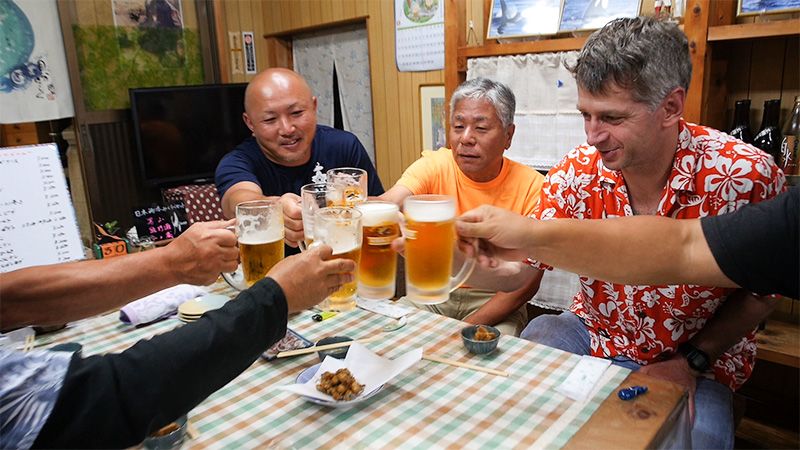 Former AP journalist Jay Alabaster lived in Taiji for two years, building up relationships of trust with the local fishermen. He is now pursuing a PhD at Arizona State University, studying the relationships between Taiji and the media.
Former AP journalist Jay Alabaster lived in Taiji for two years, building up relationships of trust with the local fishermen. He is now pursuing a PhD at Arizona State University, studying the relationships between Taiji and the media.
INTERVIEWER In your book Okujira-sama, recently published by Shūeisha, you write about covering a meeting of the International Whaling Commission in 2002. You were shocked and angered by the unproductiveness of the conference. What do you make of the Japanese government’s way of dealing with the whaling controversy?
SASAKI I think first of all, before putting your own views forward, it’s important to make sure that you understand the other side well. Why do people in the West feel so strongly about dolphins and whales? Extreme groups like Sea Shepherd didn’t just suddenly spring up out of nowhere. The whole way of thinking about the relationship of people to nature and animals is fundamentally different from that in Japan.
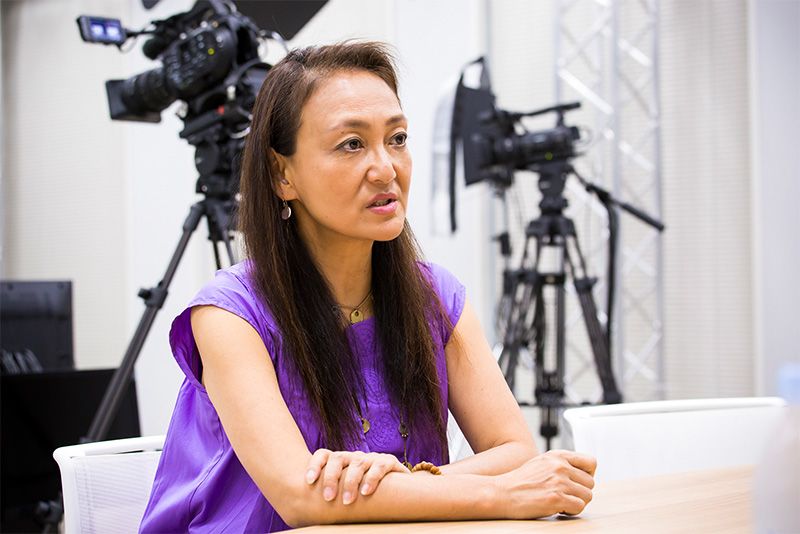 Sasaki says the Japanese government is failing to fulfill its duty of accountability toward the international community.
Sasaki says the Japanese government is failing to fulfill its duty of accountability toward the international community.
Japan might argue that whaling is part of Japanese traditions, but in the West the expectation is that outdated traditions should be cast aside if they cannot evolve alongside human society. The meaning of the term “animal rights” is also evolving. Whales became a symbol of the environmental movement following the Save the Whales campaign in the 1970s. But since The Cove, the focus is starting to shift to the idea of animal rights itself. This is a twenty-first-century civil movement that looks to include whales, dolphins, and other animals felt to be close to human beings under the umbrella of protection that society should provide for the weak. The Japanese response to this is always the same: If it’s all right to kill domesticated animals like cows and pigs, then why not whales? But this is an example of a frozen thought process, one that is failing to evolve.
Today, the average consumption of whale meat per person in Japan is equivalent to two or three slices of ham per year. By simply repeating catchwords like “tradition” and “culture,” Japan is failing to fulfil its duty of accountability to the international community. On the other hand, the West is guilty of trying to push its own values on Japan. That’s why there is such a need for dialogue. The two sides need to get together and sort through these knotty differences one by one.
Regional Communities Facing the Threat of Extinction
INTERVIEWER How do you feel about the impact of social media?
SASAKI Work on our film had to stop for a while after the Great East Japan Earthquake; we started filming again in 2014. In January that year, US Ambassador Caroline Kennedy tweeted a criticism of the dolphin drive in Taiji, which created a huge storm online. The year after that, an article about the making of the film appeared in the English-language version of the Asahi Shimbun website. Within just a few days, the piece was shared widely online and flooded with criticisms and negative comments. That’s when I really became aware of the almost terrifying power of social media.
Words like “Taiji,” “dolphin drive,” “dolphin hunt” have become shorthand symbols, and no one ever stops to think of the real people behind those words and the lives they’re living. Today, short and fast communication dominates everything. I feel very concerned about the possible consequences of this tendency for words to turn into mere ciphers.
INTERVIEWER Jay Alabaster has suggested that what is most at threat of extinction today is not so much whales and dolphins as the lifestyles of small provincial towns like Taiji.
SASAKI As globalization moves forward, small towns like Taiji are in decline everywhere around the world. The dolphin drives account for around 30 percent of the town’s total fishing catch. What we need to understand is that things like whaling and the dolphin hunts are not carried out simply as economic activities or for food. They’re intimately tied up with people’s identity and the sense of pride they have in their town. With very little access to fresh water, the people of Taiji couldn’t grow crops. And they just happened to be on a part of the coast that was on the whales’ migration routes.
These people have a very strong sense that their present lives exist thanks to the presence of the whales and dolphins that have supported them for the past 400 years. I think we should think seriously about what it means to deprive people of something like that—regardless of our opinions on the rights and wrongs of the issue. It’s not a controversy that concerns national tradition and the food culture of the nation as a whole—it’s about people in these regional communities and the significance that they find in their lives.
INTERVIEWER The mayor of Taiji is already taking steps toward realizing his vision of turning the town into a center of cetacean research in the future. Perhaps it needs to be the people of the town who decide their future rather than external pressure.
SASAKI It’s certainly something that the people of Taiji should think about, but I think it’s a question that Japan as a whole needs to consider too. There are other areas, in Iwate Prefecture for example, where people hunt dolphins—but only Taiji comes in for this kind of international criticism. Unlike spear fishing, which takes place out at sea, the dolphin drive hunt happens close to land, which means it is easily visible. This simple fact has been made it a target for criticism and hostility.
INTERVIEWER Stricter immigration controls have been imposed on foreign antiwhaling activists in recent years, and there are fewer members in Taiji now than before. Do you think this is likely to spell an end to their activities?
SASAKI Oh, I sort of doubt that they’ll give up. It’s simply not possible that the situation will fizzle out just because they’re no longer coming to Japan. On September 1 every year, when the hunt gets underway in Taiji, there are mass demonstrations and protests in front of Japanese embassies and consulates all over the world. But this doesn’t get reported in Japan. This lack of visibility is something that could make the problem even more difficult going forward.
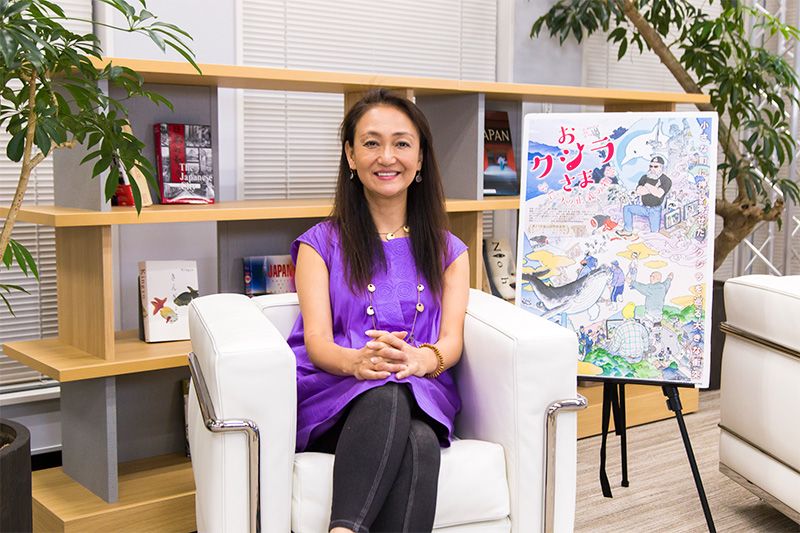 A Whale of a Tale is playing at select theaters around Japan. Although there are not yet any firm plans for a US release, Sasaki says the film is likely to be available as a digital download.
A Whale of a Tale is playing at select theaters around Japan. Although there are not yet any firm plans for a US release, Sasaki says the film is likely to be available as a digital download.
